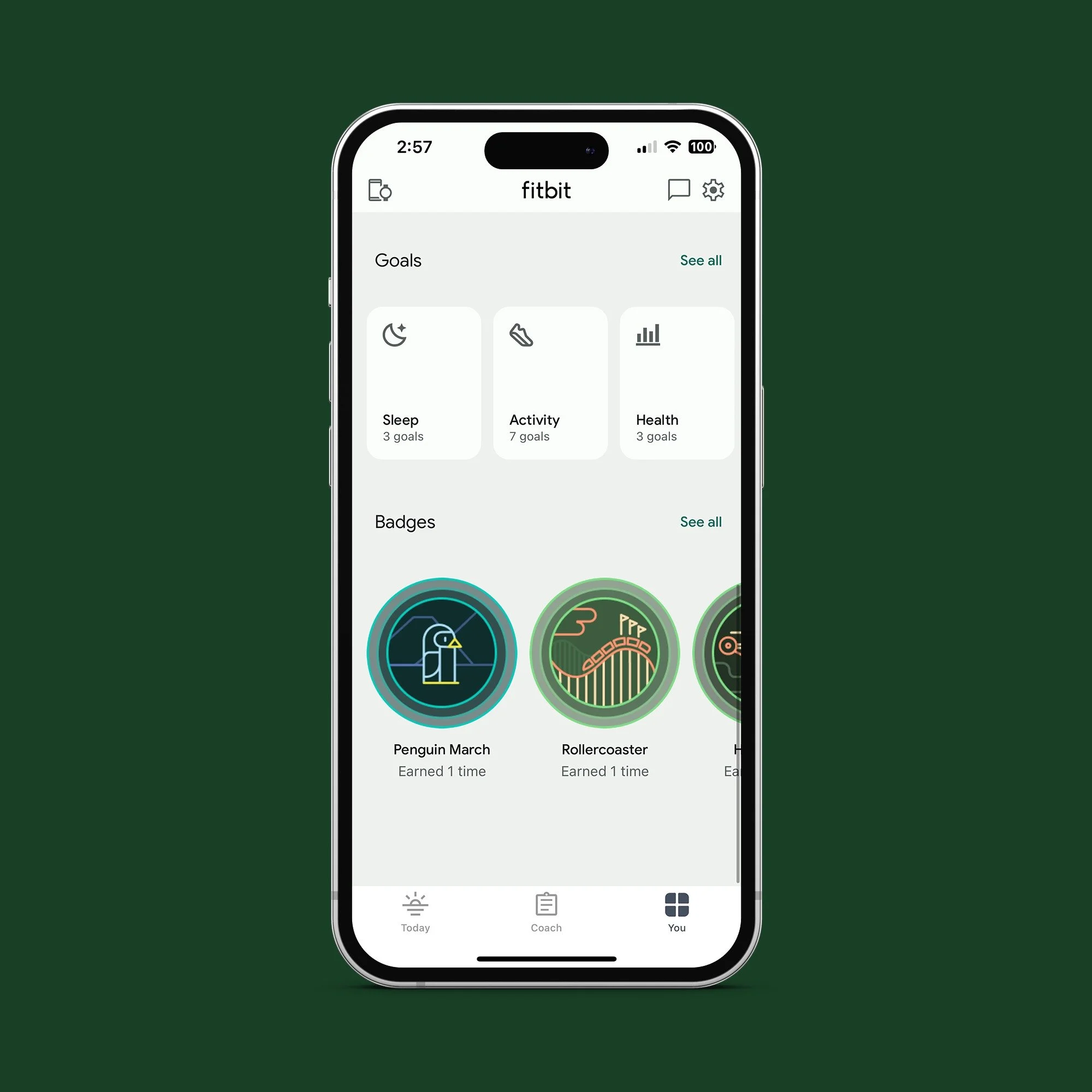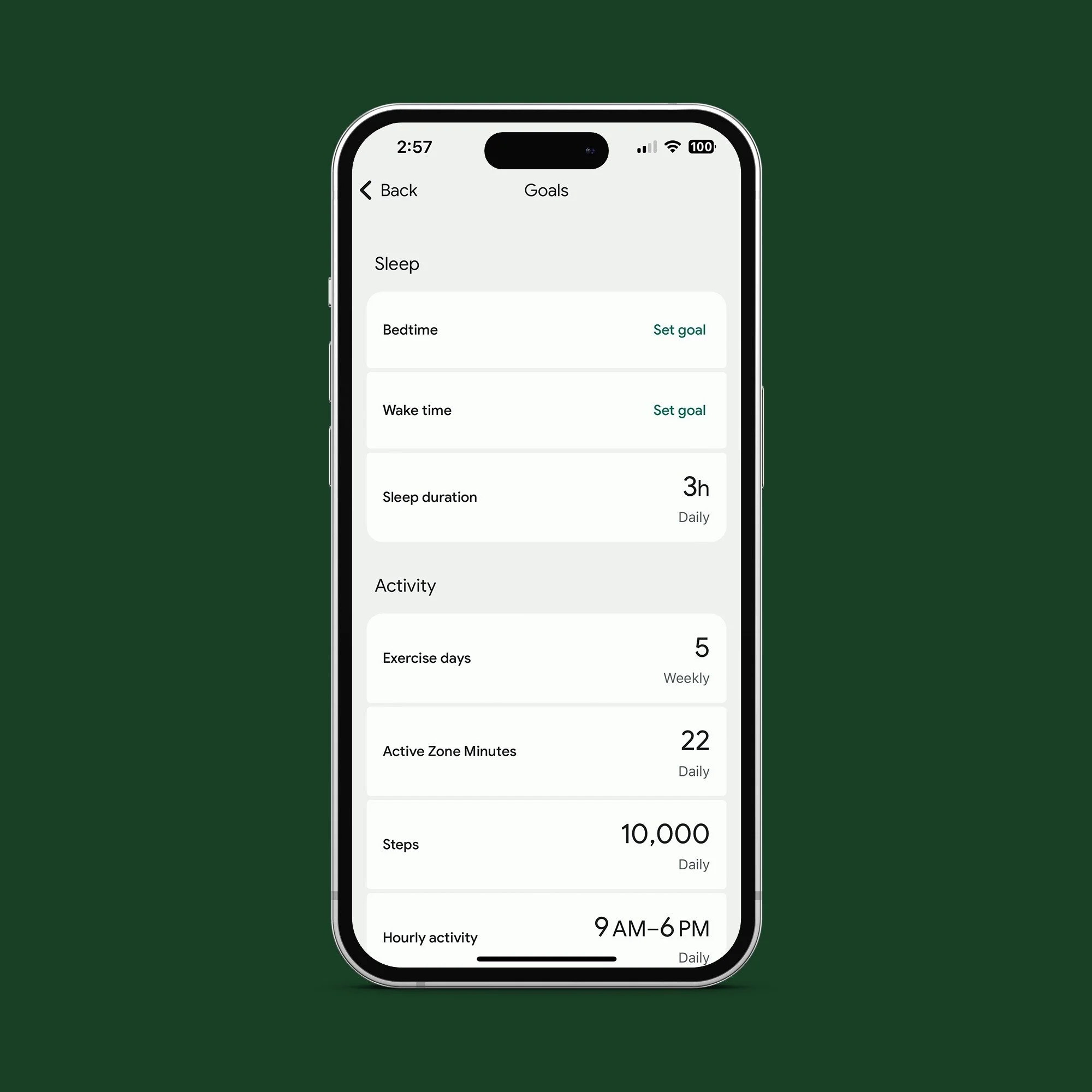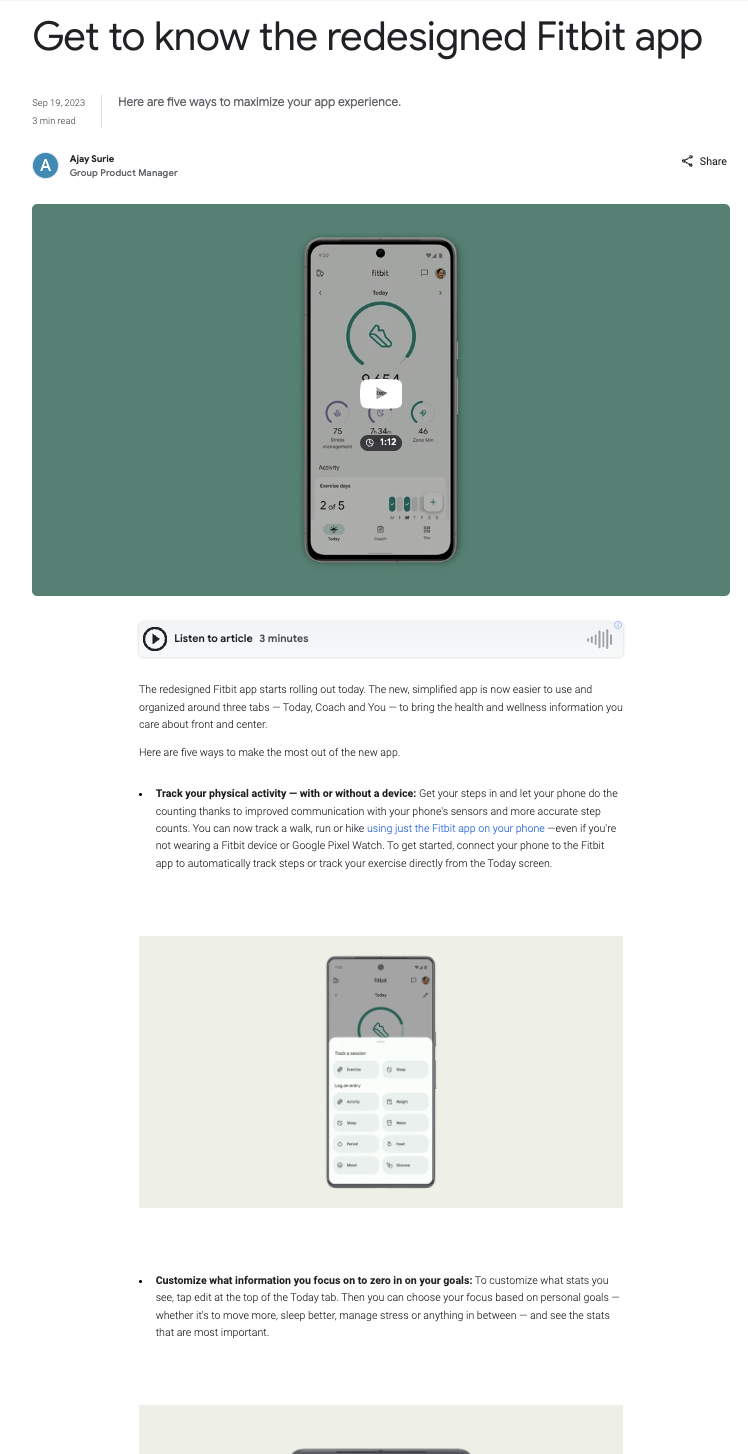App Re-DESIGN FOR FITBITContext
Google acquired Fitbit in 2021, giving product teams an opportunity to deliver a more streamlined user experience for the 28+ million daily active global users joining the Google ecosystem.
Image Credit: Google
Problem
The legacy Fitbit mobile app provided users with an ambiguous goal-setting experience, with 17 unique goal experiences on the app's back end. Consequently, users reported pain points around setting goals across the Fitbit pillars on the front end of the mobile app, struggling to create, update, and delete their health goals. Beyond these usability gaps, the product team was tasked with refreshing the look and feel of the Fitbit mobile app to reflect the design standards of the broader Google ecosystem following its acquisition in 2021.
Image Credit: Google
Process
Literature Review: As the lead UXR for Fitbit’s Goals Platform, I consolidated all existing research around goal-setting across Google's health product areas (e.g., Fitbit, Android, Google Health, AIUX, etc.) to identify the top opportunities for our goal-setting framework.
Prototyping: I then collaborated cross-regionally with Engineering (Bucharest, Romania) and Design (London, United Kingdom) to scope a series of evaluative studies ahead of the app re-launch. We created an interactive Figma prototype of a new goal-setting experience, applying user feedback from existing studies.
CUJ Testing: This v1 prototype of a preliminary goal-setting template, wherein all 17 goals were standardized, was then validated through a round of critical user journey (CUJ) testing so the team could collect baseline data on task completion.
Usability Testing: Two subsequent evaluative studies were launched to address baseline findings. The new app launched on time in Q4 2023.
Image Credit: Google
Impact
Literature Review - Consolidated and summarized 20+ internal health goal studies, which informed the development of six major themes and accompanying recommendations for the goals feature.
CUJ Testing - Five core feature CUJs were tested, which (1) gave the team baseline usability data around the completion of core goal-setting tasks in the existing Fitbit app and (2) enabled the team to move forward with the next phase of the app redesign
Usability Testing - Findings indicated a ‘healthy’ assessment result, which enabled the feature team to launch an internal survey. Identified minor risks of this beta feature ahead of survey launch. I also Identified p0 feature pain points that the engineering and design team addressed ahead of launch and made p1 recommendations for post-launch (de-scoped features to launch in Q1 2024)
Image Credit: Google
Reflections
Budget cuts, headcount reductions, frequent re-orgs, and accelerated timelines meant that my teammates and I had to be nimbler than ever to ensure user feedback was captured in this app re-launch. Though the public’s reception of the re-launch was mixed, I’m most proud of how the user researchers on this workstream showed up for each other. I pivoted to the use of secondary data when possible if it meant I could reallocate research spending to cover a foundational study of a teammate whose research pillar had a less robust research archive. I sat in on process improvement meetings with UX Writing, Legal, and Clinical to standardize the copy used across the 17 goal-setting screens being tested in our Figma mocks to reduce the risk of process inefficiencies and inconsistent user feedback. If we didn’t have the engineering capacity to ship a feature by launch, researchers collaborated to make recommendations on when the next soonest target for that feature should occur on the product roadmap. With research in the United States, Design in the UK, and Engineering in Romania, coordinating this effectively across time zones wasn’t easy, but I’m proud of how we made it work.
Image Credit: Google
AI-Enabled Nutrition for Area120
AI-Enabled Fitness for Google
Aloud.ai for YouTube







